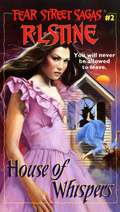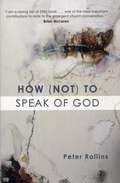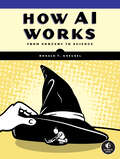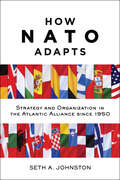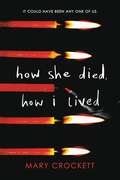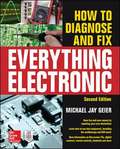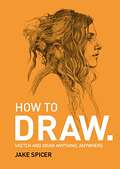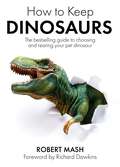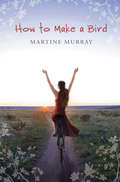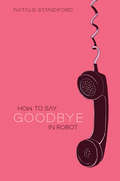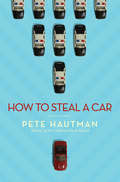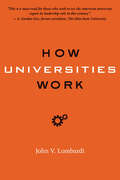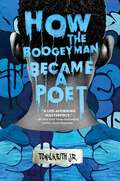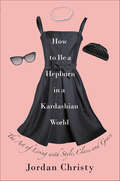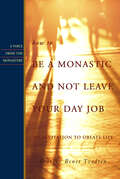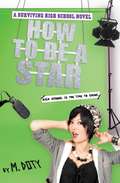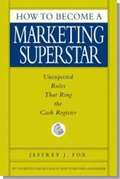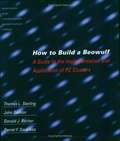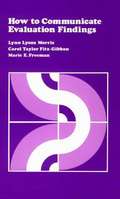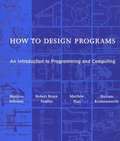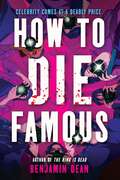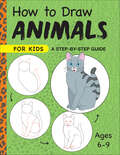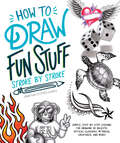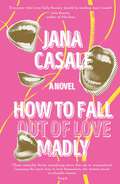- Table View
- List View
House of Whispers: A New Fear; House Of Whispers; Forbidden Secrets (Fear Street Saga #2)
by R.L. StineAmy Pierce knows nothing of the terrifying Fear history when she arrives for a visit with Simon and Angelica Fear. Their New Orleans mansion is beautiful—but Amy senses something evil there. Something that watches her. Waits for her. Will Amy be strong enough to escape the powers controlled by the Fear family?
How (Not) to Speak of God
by Peter RollinsWith sensitivity to the Christian tradition and a rich understanding of postmodern thought, Peter Rollins argues that the movement known as the "emerging church" offers a singular, unprecedented message of transformation that has the potential to revolutionize the theological and moral architecture of Western Christianity.How (not) to Speak of God sets out to explore the theory and praxis of this contemporary expression of faith. Rollins offers a clear exploration of this embryonic movement and provides key resources for those involved in communities that are conversant with, and seeking to minister effectively to, the needs of a postmodern world. "Here in pregnant bud is the rose, the emerging new configuration, of a Christianity that is neither Roman nor Protestant, neither Eastern nor monastic; but rather is the re-formation of all of them. Here, in pregnant bud, is third-millennium Christendom." —Phyllis Tickle "I am a raving fan of the book you are holding. I loved reading it. I have already begun widely recommending it. Reading it did good for my mind and for my soul. It helped me understand my own spiritual journey more clearly, and it gave me a sense of context for the work I'm involved in. In fact, I would say this is one of the two or three most rewarding books of theology I have read in ten years." —Brian McLaren, from the Foreword
How AI Works: From Sorcery to Science
by Ronald T. KneuselAI isn&’t magic. How AI Works demystifies the explosion of artificial intelligence by explaining—without a single mathematical equation—what happened, when it happened, why it happened, how it happened, and what AI is actually doing "under the hood."Artificial intelligence is everywhere—from self-driving cars, to image generation from text, to the unexpected power of language systems like ChatGPT—yet few people seem to know how it all really works. How AI Works unravels the mysteries of artificial intelligence, without the complex math and unnecessary jargon.You&’ll learn: The relationship between artificial intelligence, machine learning, and deep learningThe history behind AI and why the artificial intelligence revolution is happening nowHow decades of work in symbolic AI failed and opened the door for the emergence of neural networksWhat neural networks are, how they are trained, and why all the wonder of modern AI boils down to a simple, repeated unit that knows how to multiply input numbers to produce an output number.The implications of large language models, like ChatGPT and Bard, on our society—nothing will be the same againAI isn&’t magic. If you&’ve ever wondered how it works, what it can do, or why there&’s so much hype, How AI Works will teach you everything you want to know.
How NATO Adapts: Strategy and Organization in the Atlantic Alliance since 1950 (The Johns Hopkins University Studies in Historical and Political Science #132)
by Seth A. JohnstonDespite momentous change, NATO remains a crucial safeguard of security and peace.Today’s North Atlantic Treaty Organization, with nearly thirty members and a global reach, differs strikingly from the alliance of twelve created in 1949 to "keep the Americans in, the Russians out, and the Germans down." These differences are not simply the result of the Cold War’s end, 9/11, or recent twenty-first-century developments but represent a more general pattern of adaptability first seen in the incorporation of Germany as a full member of the alliance in the early 1950s. Unlike other enduring post–World War II institutions that continue to reflect the international politics of their founding era, NATO stands out for the boldness and frequency of its transformations over the past seventy years.In this compelling book, Seth A. Johnston presents readers with a detailed examination of how NATO adapts. Nearly every aspect of NATO—including its missions, functional scope, size, and membership—is profoundly different than at the organization’s founding. Using a theoretical framework of "critical junctures" to explain changes in NATO’s organization and strategy throughout its history, Johnston argues that the alliance’s own bureaucratic actors played important and often overlooked roles in these adaptations. Touching on renewed confrontation between Russia and the West, which has reignited the debate about NATO’s relevance, as well as a quarter century of post–Cold War rapprochement and more than a decade of expeditionary effort in Afghanistan, How NATO Adapts explores how crises from Ukraine to Syria have again made NATO’s capacity for adaptation a defining aspect of European and international security. Students, scholars, and policy practitioners will find this a useful resource for understanding NATO, transatlantic relations, and security in Europe and North America, as well as theories about change in international institutions.
How Not to Disappear
by Clare FurnissA pregnant teen and her gin sling loving great-aunt go on the journey of a lifetime in this &“absolutely gorgeous, heartfelt, and incredibly enjoyable&” (Robin Stevens, author of Murder Most Unladylike) novel that shows what happens when you&’re on the brink of losing everything.Our memories are what make us who we are. Some are real. Some are made up. But they are the stories that tell us who we are. Without them we are nobody. Hattie&’s summer is not going according to plan. Her two best friends have abandoned her: Reuben has run off to Europe to &“find himself&” and Kat is in Edinburgh with her new girlfriend. Meanwhile Hattie is stuck babysitting her twin siblings and dealing with the endless drama surrounding her mother&’s wedding. And she&’s also just discovered that she&’s pregnant with Reuben&’s baby. Then Gloria—Hattie&’s great-aunt who no one even knew existed—comes crashing into her life. Gloria&’s fiercely independent, rather too fond of a gin sling, and is in the early stages of dementia. Together the two of them set out on a road trip of self-discovery—Gloria to finally confront the secrets of her past before they are erased from her memory forever and Hattie to face the hard choices that will determine her future.
How She Died, How I Lived
by Mary Crockettp.p1 {margin: 0.0px 0.0px 0.0px 0.0px; font: 13.0px Times} Girl in Pieces meets The Way I Used to Be in this poignant and thought-provoking novel about a girl who must overcome her survivor's guilt after a fellow classmate is brutally murdered. I was one of five. The five girls Kyle texted that day. The girls it could have been. Only Jamie--beautiful, saintly Jamie--was kind enough to respond. And it got her killed. On the eve of Kyle's sentencing a year after Jamie's death, all the other "chosen ones" are coping in various ways. But our tenacious narrator is full of anger, stuck somewhere between the horrifying past and the unknown future as she tries to piece together why she gets to live, while Jamie is dead.Now she finds herself drawn to Charlie, Jamie's boyfriend--knowing all the while that their relationship will always be haunted by what-ifs and why-nots. Is hope possible in the face of such violence? Is forgiveness? How do you go on living when you know it could have been you instead?
How To Diagnose And Fix Everything Electronic
by Michael Jay GeierRepair all kinds of electrical products, from modern digital gadgets to analog antiques, with help from this updated book. How to Diagnose and Fix Everything Electronic, Second Edition, offers expert insights, case studies, and step-by-step instruction from a lifelong electronics guru. Discover how to assemble your workbench, use the latest test equipment, zero in on and replace dead components, and handle reassembly. Instructions for specific devices, including stereos, MP3 players, digital cameras, flat-panel TVs, laptops, headsets, and mobile devices are also included in this do-it-yourself guide. Choose the proper tools and set up your workbench Ensure personal safety and use proper eye and ear protection Understand how electrical components work and why they fail Perform preliminary diagnoses based on symptoms Use test equipment, including digital multimeters, ESR meters, frequency counters, and oscilloscopes Interpret block, schematic, and pictorial diagrams Disassemble products and identify sections Analyze circuits, locate faults, and replace dead parts Re-establish connections and reassemble devices
How To Draw: Sketch and draw anything, anywhere with this inspiring and practical handbook
by Jake SpicerJake Spicer wants you to learn how to draw. This is his complete course in drawing, suitable for complete beginners as well as experienced artists, and designed to help you fit drawing into your lifestyle. Tried-and-tested exercises, ranging from five-minute sketches to dedicated sessions of an hour or longer, cover every subject and location you could wish for, while accessibly written drawing theory helps you relate the technical concepts to your practice, helping you to hone your craft. Whatever your goals are, expert art tutor Jake Spicer gives you the inspiration and encouragement to draw more - and keep improving.
How To Keep Dinosaurs: The perfect mix of humour and science
by Robert Mash'Who could resist a handbook about potential pets that has a little symbol for "likes children" and a separate one for "likes children to eat"... wonderful' GUARDIANHollywood and the popular press would have us believe that all dinosaurs are gigantic, hostile and untameable. In fact, there are many species that make charming and even useful companions: Velociraptor - a splendid, loyal, fierce, friendDeinonychus - will not eat dog food (dogs are another matter)Tyrannosaurus - least suitable to keep; will need special licenceOrnithomimus - an appealing first dinosaur for the child anxious for her first rideThis book advises you which dinosaur is right for you and your home, from the city apartment dweller looking for a lap pet, to the country estate owner looking to tighten up on security. HOW TO KEEP DINOSAURS is a bestselling guide, packed with the sort of information keen dinosaur keepers crave - from feeding and housing to curing common ailments, breeding and showing your animal. The author, a zoologist with extensive experience of dinosaurs, has provided a timely and much-needed source book for all those who keep dinosaurs and for the huge numbers who are contemplating getting one. It is as essential to every dinosaur keeper as a stout shovel and a tranquilliser rifle.
How To Make A Bird
by Martine MurrayA beautiful novel that captures the aching of a teenager ready to heal.It's dawn, on an empty road in the countryside. Empty, except for the girl in the long, red evening gown, standing next to a bicycle, and looking back at the home she's about to leave. Mannie's ready to start a new life and forget the terrible things that have happened here, but there are questions that need to be answered before she can let go. Questions about her elegant but unstable mother, her brother who's always overshadowed her, and his friend Harry Jacob, who just might be Mannie's boyfriend . . .
How To Say Goodbye In Robot
by Natalie StandifordFrom bestselling author Natalie Standiford, an amazing, touching story of two friends navigating the dark waters of their senior year.New to town, Beatrice is expecting her new best friend to be one of the girls she meets on the first day. But instead, the alphabet conspires to seat her next to Jonah, aka Ghost Boy, a quiet loner who hasn't made a new friend since third grade. Something about him, though, gets to Bea, and soon they form an unexpected friendship. It's not romance, exactly - but it's definitely love. Still, Bea can't quite dispel Jonah's gloom and doom - and as she finds out his family history, she understands why. Can Bea help Jonah? Or is he destined to vanish?
How To Steal a Car
by Pete HautmanFrom National Book Award winner Pete Hautman, the story of a girl who acts out by stealing cars.Some girls act out by drinking or doing drugs. Some girls act out by sleeping with guys. Some girls act out by starving themselves or cutting themselves. Some girls act out by being a bitch to other girls. Not Kelleigh. Kelleigh steals cars.In How to Steal a Car, National Book Award winner Pete Hautman takes teen readers on a thrilling, scary ride through one suburban girl's turbulent life - one car theft at a time.
How Universities Work (Higher Ed Leadership Essentials)
by John V. LombardiThe single best description of the inside workings of contemporary universities.Witty and insightful, How Universities Work is destined to be an essential handbook for anyone wanting to understand universities in the United States. John V. Lombardi gives readers an insider’s view of the academy, describing the structure, logic, dynamics, and operational styles of both public and private institutions of higher education. Lombardi defines and describes all the bits and pieces that compose a university with remarkable economy—from budgeting systems to tenure, from the library to the athletic field. Although focused on research universities, much of the discussion applies to other types of post-secondary institutions. Ideal for students, this book will form a solid foundation for courses in higher education, but it will also be a welcome addition to faculty and administrators’ personal libraries.
How the Boogeyman Became a Poet
by Tony Keith, Jr.Poet, writer, and hip-hop educator Tony Keith Jr. makes his debut with a powerful YA memoir in verse, tracing his journey from being a closeted gay Black teen battling poverty, racism, and homophobia to becoming an openly gay first-generation college student who finds freedom in poetry. Perfect for fans of Elizabeth Acevedo, George M. Johnson, and Jacqueline Woodson.Tony dreams about life after high school, where his poetic voice can find freedom on the stage and page. But the Boogeyman has been following Tony since he was six years old. First, the Boogeyman was after his Blackness, but Tony has learned It knows more than that: Tony wants to be the first in his family to attend college, but there’s no path to follow. He also has feelings for boys, desires that don’t align with the script he thinks is set for him and his girlfriend, Blu.Despite a supportive network of family and friends, Tony doesn’t breathe a word to anyone about his feelings. As he grapples with his sexuality and moves from high school to college, he struggles with loneliness while finding solace in gay chat rooms and writing poetry. But how do you find your poetic voice when you are hiding the most important parts of yourself? And how do you escape the Boogeyman when it's lurking inside you?
How to Be a Hepburn in a Kardashian World: The Art of Living with Style, Class, and Grace
by Jordan ChristyJordan Christy shares advice on how to be the most confident version of yourself, in this fully revised and updated edition derived from How to Be a Hepburn in a Hilton World.Though fashions may change, certain things never go out of style -- like your favorite little black dress that can take you from a business meeting to a dinner party to a night on the town. But what makes it work is not the dress, it's how you present yourself while wearing it. A woman who is polite, well spoken, gracious, charming, and thoughtful is always welcome-though such women appear to be in short supply these days! Despite the headline-grabbing antics of certain flashy celebutantes, most of us would rather have respect -- for ourselves and from our family, friends, and colleagues.In this fully revised and updated edition, you will learn how to: Appear polished without sacrificing your personal style, Develop skills and discover interests to boost your self-confidence,Find your true friendships and make them stronger,Date Mr. Right instead of hooking up with Mr. Right Now,Land the perfect internship and your first job,Have a fun night without the risk of a social media faux pas.With this insightful guide you'll be loving life with style, class, and grace in no time!
How to Be a Monastic and Not Leave Your Day Job: A Guide for Benedictine Oblates and Other Christians Who Follow the Monastic Way (Voices from the Monastery)
by Benet TvedtenDiscussion around the bestseller The Benedict Option by Rod Dreher has led many people to want to know more about Benedictine principles. Originally written for monks, the principles in the Rule of St. Benedict may be applied by anyone — and in today's hectic, changing world, following its principles offers a rich spiritual connection to the stability and wisdom of monastic life. This essential guide explains how people who live and work in "the world" are still invited to balance work with prayer, cultivate interdependence with others, practice hospitality, and otherwise practice their spirituality like monks.
How to Be a Star (Surviving High School #2)
by M. DotyHigh school is the time to shine.Tired of playing sidekick to her superstar-athlete best friend, Kimi Chen has decided it's time to step into the spotlight and snag her own place at the coveted center table of the cafeteria. When her low-budget music video hits the Web and goes viral, forget about being just popular -- Kimi is famous! Boys want to date her, girls want to be her, and she is even asked to perform on her favorite TV show. After years of feeling stranded on the bottom rung of the social ladder, Kimi finds that things are finally looking up.But when fame gets in the way of her friendships, Kimi's celebrity begins to lose some of its sparkle. Being a star, it turns out, may be more than she bargained for.Discover the high price of fame and stardom in this second novel in the Surviving High School series, based on the hit mobile game from Electronic Arts.
How to Become a Marketing Superstar: Unexpected Rules that Ring the Cash Register
by Jeffrey J. FoxWith more than 600,000 books in print, nationally bestselling author Jeffrey Fox is back to 'outfox the competition'--this time with counterintuitive advice on how to become a marketing genius n his four previous bestselling business books, Jeffrey Fox has helped readers land great jobs and rise to the top of their professions. Now he turns his contrarian eye to marketing through brand building and innovation. Fox's advice is delivered in snappy, to-the-point chapters that zero in on his creative--and often counterintuitive--advice and features such unforgettable fundamentals as: Make a big splash, instead of a lot of little ripples Always have a pipeline to the president Own a market, not a mill The long and short definitions of marketingThere are also provocative 'Instant Marketing Superstar' challenges throughout the book, offering the reader a chance to solve real business problems. In a time of corporate budget cuts, it's more important than ever for all employees to be creative marketers. How to Become a Marketing Superstar is certain to find a place on the shelves of anyone who wants to increase sales in a competitive marketplace.
How to Build a Beowulf: A Guide to the Implementation and Application of PC Clusters
by Thomas L. Sterling John Salmon Donald J. Becker Daniel F. SavareseSupercomputing research--the goal of which is to make computers that are ever faster and more powerful--has been at the cutting edge of computer technology since the early 1960s. Until recently, research cost in the millions of dollars, and many of the companies that originally made supercomputers are now out of business. The early supercomputers used distributed computing and parallel processing to link processors together in a single machine, often called a mainframe. Exploiting the same technology, researchers are now using off-the-shelf PCs to produce computers with supercomputer performance. It is now possible to make a supercomputer for less than $40,000. Given this new affordability, a number of universities and research laboratories are experimenting with installing such Beowulf-type systems in their facilities. This how-to guide provides step-by-step instructions for building a Beowulf-type computer, including the physical elements that make up a clustered PC computing system, the software required (most of which is freely available), and insights on how to organize the code to exploit parallelism. The book also includes a list of potential pitfalls.
How to Communicate Evaluation Findings
by Lynn Lyons Morris Carol Taylor Fitz-Gibbon Marie E. FreemanThe purpose of this book is to help you communicate the evaluation information you have collected. The book contains prescriptions and advice to help an evaluator provide information that will be usable and used at many stages of a program's development.
How to Design Programs: An Introduction to Programming and Computing
by Matthias Felleisen Robert Bruce Findler Shriram Krishnamurthi Matthew FlattThis introduction to programming places computer science in the core of a liberal arts education. Unlike other introductory books, it focuses on the program design process. This approach fosters a variety of skills--critical reading, analytical thinking, creative synthesis, and attention to detail--that are important for everyone, not just future computer programmers. The book exposes readers to two fundamentally new ideas. First, it presents program design guidelines that show the reader how to analyze a problem statement; how to formulate concise goals; how to make up examples; how to develop an outline of the solution, based on the analysis; how to finish the program; and how to test. Each step produces a well-defined intermediate product. Second, the book comes with a novel programming environment, the first one explicitly designed for beginners. The environment grows with the readers as they master the material in the book until it supports a full-fledged language for the whole spectrum of programming tasks. All the book's support materials are available for free on the Web. The Web site includes the environment, teacher guides, exercises for all levels, solutions, and additional projects.
How to Die Famous
by Benjamin DeanFor fans of Little White Lies and Two Can Keep a Secret comes an addictive thriller about a budding teen celebrity secretly investigating his brother's suspicious death while navigating the highs and lows of fame. Rising star Abel Miller has just landed a role in one of the hottest reboots on the Omni Channel, Sunset High. It looks like he&’ll be yet another budding celebrity plucked from obscurity, but he has a secret: his brother, Adam, a mere production associate, died during the filming of the last attempt at Sunset High, and no one knows how... or why. Abel is going to find out. But when he meets the other stars of the show— Lucky, Ryan, and Ella, along with creator Lake Carter— he realizes there&’s even more darkness beneath the shimmer of fame. They all have their own secrets to hide, and one of them is willing to kill to keep it that way.
How to Draw Animals for Kids: A Step by Step Guide (Drawing for Kids Ages 6 to 9)
by Rockridge PressLearn to draw animals with step-by-step activities for kids ages 6 to 9Anyone can be an artist—all you need is your imagination! Learn how to draw beginner-friendly adorable animals with this step-by-step drawing book for kids. It's full of activities, helpful tips, and lots of animals to draw—from cats and dogs to owls and elephants. A great resource for parents and teachers to teach kids to draw shapes, lines, and other drawing basics. Build on these skills, advance to more challenging animals, and then customize them into something unique. Just grab a pencil and get ready to explore the animal kingdom!A world of animals—Draw animals from the land, sea, and sky, including dolphins, bald eagles, sloths, pandas, goldfish, penguins, and more.Step-by-step method—Follow along and develop your drawing from basic shapes like circles and lines all the way to a beautifully detailed animal.Time to get creative—Get your imagination going with blank scenes that let you draw in your own animals, along with extra drawing ideas so you can keep creating.Discover how to draw animals the easy way with the step-by-step instructions in this book about drawing for kids.
How to Draw Fun Stuff Stroke-by-Stroke: Simple, Step-by-Step Lessons for Drawing 3D Objects, Optical Illusions, Mythical
by Jonathan Stephen HarrisA fresh and exciting drawing guide for young artists who seek projects that are out of the ordinary.Are you tired of drawing the same boring stuff? Artist and author Jonathan Stephen Harris shows you how to draw almost anything with 40 fun and exciting projects that are anything but boring. You'll learn how to create crazy trick art, amazing 3D objects, mind-blowing anamorphic illustrations, and brain-twisting optical illusions. Every project features detailed, step-by-step instructions and illustrations that use color to help teach you exactly how to do it. You'll start by learning the basics of drawing, what tools you need, and the basic techniques you need to know so you can create your own amazing drawings. Soon you'll be creating works of amazing art that is out of this world! Here's what's inside:40 exciting drawing projects that will thrill young artists of all levels of ability.Detailed, step-by-step instructions that take readers through every drawing from start to finish, using color to illustrate new lines so the reader can clearly see the next steps.Simple tutorials for basic drawing skills like shading as well as creating textures and surfaces so readers can learn drawing the right way.Tons of creative ideas that will inspire you to create your own amazing works of art.
How to Fall Out of Love Madly
by Jana Casale&“Three relatable thirty somethings drive this ode to womanhood. Learning the hard way to love themselves, the women teach invaluable lessons.&”—People &“Everyone who loves Sally Rooney should be reading Jana Casale!&”—Julie Buntin, author of Marlena Three women confront the compromises they&’ve made to appease the men they love. Joy and Annie are friends and roommates whose thirty-something lives aren&’t exactly what they&’d imagined. To make ends meet, they decide to rent their extra bedroom to Theo, who charms Joy with his salt-and-pepper hair and adoration of their one-eyed cat. When Annie goes to live with her boyfriend, Theo and Joy settle into a comfortable domesticity. Then Theo brings home Celine, the girlfriend he&’s never mentioned, who is possibly the most stunning woman Joy has ever seen. Joy resolves to do whatever it takes to hold on to him, falling ever deeper into an emotional hellscape of her own making. She is too obsessed to realize that Celine&’s beauty doesn&’t protect her from pain. Haunted by an event from her past, Celine can&’t escape her shame and finds herself in an endless cycle of self-sabotage. Annie is baffled by Joy&’s senseless devotion to Theo, but she&’s consumed by her own obsessions: she can&’t stop parsing her commitment-phobic boyfriend&’s texts in an exhausting mission to maintain his approval. At work, where she fully embraces her natural assertiveness, Annie is a star. But when an anonymous letter lands on her desk accusing her esteemed and supportive boss of sexual misconduct, she is forced to decide who and what she&’s willing to stand up for. Perceptive, mordantly funny, and full of heart, How to Fall Out of Love Madly examines women&’s many relationships—with one another, their mothers, their work, men, and themselves—to reveal their underlying power and complexity. It asks, why do so many smart, compassionate, otherwise empowered women tolerate egregious behavior from the men they love? And what will it take for them to reclaim control?
